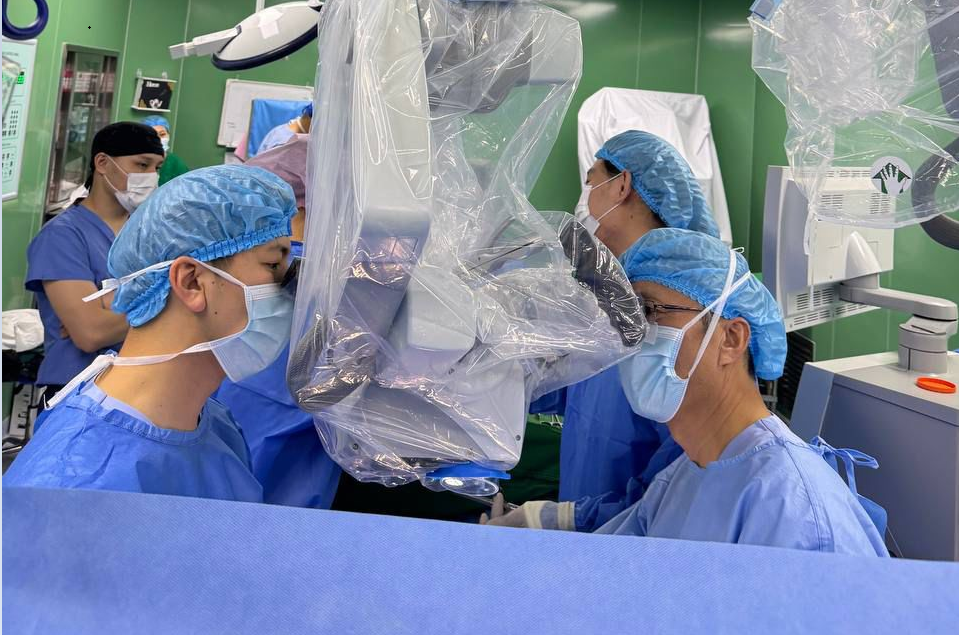

E-News
This Month’s Hospital
Professor Soo-Bin Lim from the Department of Neurosurgery at Soonchunhyang University Hospital Bucheon Successfully Treats Patient with Ossification of the Posterior Longitudinal Ligament (OPLL) Using Mongolia’s First Anterior Cervical Corpectomy and Fusi
2025.09.29Professor Soo-Bin Lim from the Department of Neurosurgery
at Soonchunhyang University Hospital Bucheon Successfully Treats Patient with
Ossification of the Posterior Longitudinal Ligament (OPLL) Using Mongolia’s
First Anterior Cervical Corpectomy and Fusion

As
part of a medical training project between the Health Development Center (HDC)
under the Ministry of Health of Mongolia, and Gyeonggi Province, South Korea, a
delegation from Gyeonggi Province visited Ulaanbaatar. This visit was aimed at
conducting a ‘Mento-Mentee Collabo Surgery’ with two medical staff from the
National Center for Traumatology and Orthopedics of Mongolia, who are currently
training at Soonchunhyang University Hospital Bucheon, and Professor Im Soo-bin
(Department of Neurosurgery, Soonchunhyang University Hospital Bucheon).
At the
end of last year, Professor Im Soo-bin performed surgery on a patient with OPLL
at the First Central Hospital of Mongolia alongside Mongolian medical staff.
The surgery, which involved an anterior cervical corpectomy and fusion and
posterior longitudinal ligament removal for spinal nerve decompression, drew
significant attention as it was unfamiliar and unprecedented in Mongolia.
OPLL
is a condition where the posterior longitudinal ligament gradually calcifies
over a long period, compressing the spinal cord and leading to a gradual
decline in upper and lower limb function. It often results in imbalance, muscle
weakness, and coordination issues, making patients prone to falls. Since there
is no pain in the early stages, patients often do not seek medical attention
until they experience unstable walking or minor falls that can lead to
paralysis. OPLL is a common condition among East Asians, including Mongolians,
Koreans, Japanese, and Chinese, making it a shared concern.
Surgical
methods include direct removal of the posterior longitudinal ligament through
anterior cervical corpectomy and fusion, and posterior laminoplasty to widen
the spinal canal. The posterior approach does not fundamentally remove the
calcified posterior longitudinal ligament, posing a risk of recurrence.
Additionally, it can damage the muscles and ligaments at the back of the
cervical spine, potentially leading to forward bending deformities. Even in
Japan, where surgical techniques for this condition have been developed, the
posterior approach has been predominantly used over the anterior approach.
The
anterior cervical corpectomy and fusion performed by Professor Im Soo-bin fundamentally
removes the posterior longitudinal ligament, preventing recurrence and
effectively decompressing the spinal nerves. However, the anterior approach is
highly challenging. Minor manipulations during surgery can cause irreversible
damage to the spinal cord, and complications such as massive bleeding and
cerebrospinal fluid leakage make it a difficult procedure for spinal surgeons.
The
day after the surgery (December 19), the patient showed rapid improvement in
finger and toe movements and was able to walk immediately. Professor Im Soo-bin
stated, “Despite the different surgical environment and lack of equipment, the
surgery was successful thanks to the help of the Mongolian Ministry of Health and
my students. I hope the Mongolian medical staff will continue to develop the
surgical techniques they have learned.”
Meanwhile,
through health and medical cooperation between the Mongolian government and the
Gyeonggi Provincial Government of South Korea, many Mongolian medical staff are
planned to continue their training at excellent medical institutions in Gyeonggi
Province.
Website: https://international.schmc.ac.kr/bucheonEng/index.do









